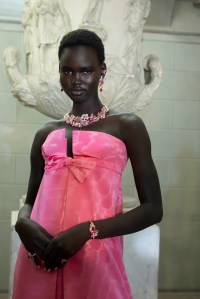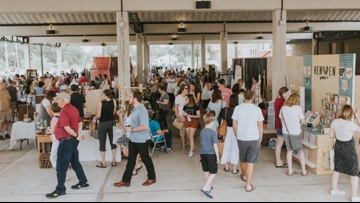
Cartier CEO Extols Virtue of Timelessness
When connected watches started becoming a thing about 10 years ago, Cartier ultimately decided they were a disconnect with its legacy of timelessness, since the electronic modules that powered them were prone to obsolescence.
“How to stay timeless yet timely in a changing world” was the theme of Cartier chief executive officer Cyril Vigneron’s address, and the answer the executive returned to was often rooted in the past, but also dialed into the future.
Hence the Richemont-owned brand’s decision to embed sustainability and durability in its iconic Tank Must timepiece by hollowing out the Roman numerals, letting light power a solar backing, thus replacing the standardized quartz movement and the need for any battery.
“And this received a very, very strong and positive reaction,” Vignoron told the WWD Global Fashion & Beauty Summit in Chengdu, hosted in partnership with Chinese retailer SKP.
The executive also cited another counterintuitive innovation — this one marketing driven — to fan youth interest in an old style, the Panthère de Cartier watch, which was originally launched in the ’80s but had been dormant since 2004.
Cartier invited Panthère owners in Japan, Europe and the U.S. to bring in old watches for free repairs. Mothers often offered their daughters the repaired timepieces, providing them with an entrée into a jewelry brand that was probably out of reach, hence forging an emotional connection early.
As a way of demonstrating that a “living heritage” brand like Cartier, founded in 1847, sits upon a treasure trove of enduring creations, Vigneron flashed a slide showcasing Ballon Bleu and Santos watches, Love and Juste un Clou bracelets and noted that these perennial bestsellers were created over a span of 20 up to 100 years ago, arguing it’s hard to discern their age.
“We take from our patrimony something that looks absolutely stunning today,” is how he described its main creative mojo. “Timeless is not what ages well, but what is good out of time.”
Cartier’s traveling exhibitions shed light on this phenomenon. Its “Cartier and Islamic Art: In Search of Modernity” showcase, headed next to the Louvre museum in Abu Dhabi, documents how repeating geometric motifs dating back almost a millennium and seen in architectural marvels like the Great Mosque of Córdoba influenced more recent design movements like Art Deco, which ultimately gave rise to landmarks like the Chrysler Building in Manhattan.
“So modernity is not necessarily what is new — modernity is to have fresh eyes on things that may be very, very old that we bring back to life,” he said. “Sometimes looking at the past is a good lesson of what might come in the present and the future.”
Vigneron explained that these concepts feed into the brand’s retail experiences, which blend historical and contemporary elements and reference the Parisian roots of the maison while also paying tribute to the local environment.
For example, Cartier’s Rue de la Paix flagship in the French capital was recently overhauled, its internal courtyard exalting the theatricality of 19th-century Haussmannian architecture, while other elements pay tribute to the 1920s — or the 21st century.
“So basically it incorporates all the periods,” Vigneron said. “The stores can be a testimonial, a memory of all the periods, but not anchored in precisely one, which makes it possible to continue to evolve.
“When people come to the store, they say, ‘We don’t know when it was made because it looks to have been there forever, but at the same time, it seems to be contemporary and new,’” he said.
Meanwhile, Cartier’s latest location in Chengdu showcases local materials and artists — “not imposing, but as a guest and doing something that is Cartier in China that looks natural and beautiful.”
In tune with its clientele’s expectations, Cartier is ramping up its sustainability quotient.
“Luxury in general is now responsible for everything done before or after the product has been sold, meaning a collective responsibility that has an impact on environment, biodiversity and social relationships,” Vigneron said, stressing that its commitment extends to the “non-visible” elements of the supply chain, like the energy that powers stores or factories.
For example: For Cartier’s latest jewelry plant in Torino, Italy, the company rehabilitated a derelict industrial space once used for the auto industry and outfitted it with solar panels that yield 110 percent of the energy consumed by the site. “It’s the cleanest jewelry plant that we have done so far,” he said.
“We have to cooperate with all professions, suppliers, and also competitors to work on making the entire supply chain clean, including diamonds from the mine, the gold, platinum and other materials,” he added.
During a question and answer session, Vigneron was asked about his view of the Chinese market over the next five years, given the recent slowdown and troubles in the real estate sector.
“China is bound for continued growth. And that’s also what its five-year plan is saying,” he responded. “China remains a middle-income country where the average earning per inhabitant remain rather low compared to South Korea or Japan. But this is catching up quite quickly.
“There will be millions of people coming to be able to afford luxury in a one way or another. So the potential for growth in China remains strong,” he concluded.


